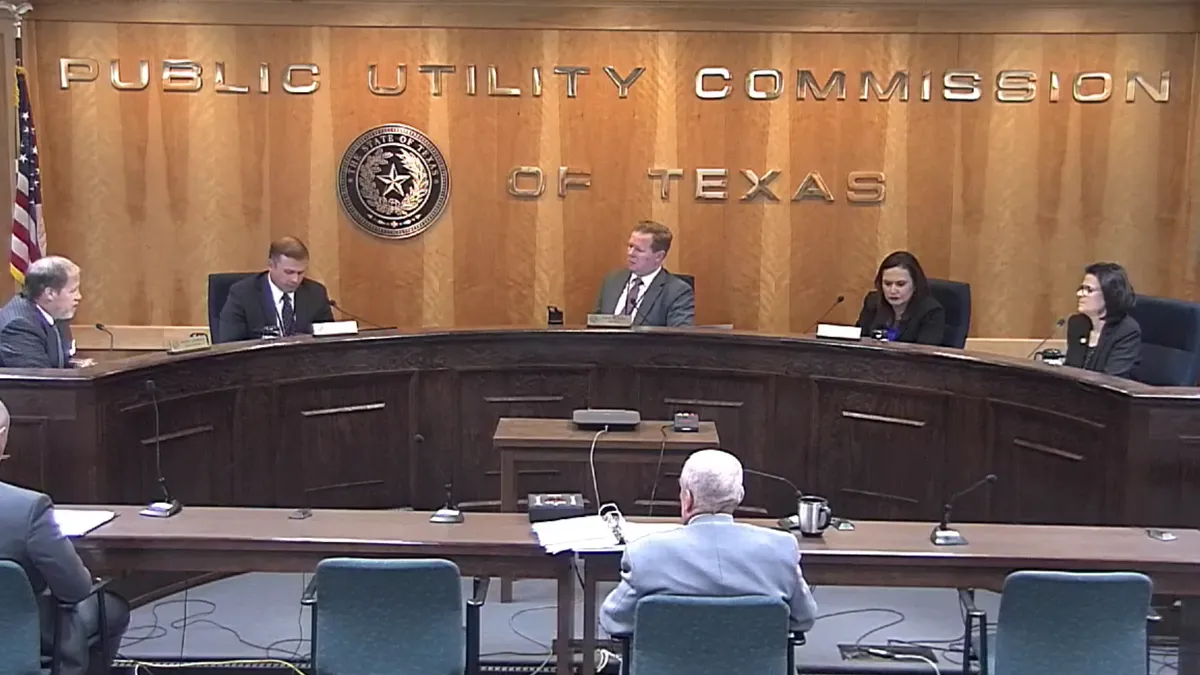Dive Brief:
- The Public Utility Commission of Texas is preparing to authorize development of an 80 MW virtual power plant project and could give approval for the initial phase of the pilot at its open meeting on Nov. 3.
- A task force focused on developing the aggregated distributed energy resource pilot, or ADER, delivered its first quarterly report to the commission in September, laying out how the program will work. The project was launched after Tesla expressed interest in aggregating Powerwall batteries in homes, regulators said.
- The ADER project will initially qualify participating resources as aggregated load resources, meaning “it will look like demand response” at the transmission level, Commissioner Will McAdams said during Thursday’s open meeting.
Dive Insight:
As Texas expands its ADER program, regulators say they will need to take a closer look at how those resources are accounted for on the Electric Reliability Council of Texas grid. But for now, they say qualifying them as aggregated load resources moves the project ahead most expeditiously.
Regulators say they want to investigate how distributed energy resources can boost electric reliability, but some details must still be worked out.
“It is unclear under [the Public Utility Regulatory Act] or the commission's rules whether or not individual customers participating in the ADER pilot project need to register as a power generation company,” McAdams said. Distributed renewable generators are exempt from having to register as power generators, McAdams noted, “but an argument can be made that batteries may not be considered renewable generation.”
Commissioner Jimmy Glotfelty supported treating ADERs as load resources, which would exempt them from any power generator registration requirements.
“The point of this project is to get a virtual power plant pilot project active, reliable and operating,” Glotfelty said. The load designation is appropriate initially and could be modified in the future.
“This is a limited pilot project. Hopefully it will expand,” he said.
Phase 1 of the pilot program would be limited to 80 MW of total ADER capacity on the ERCOT grid, with no more than 40 MW allocated to non-spinning reserve services.
Individual homeowners participating in the program will need to fill out a form for the PUCT, while distribution service providers will ensure technical standards are met by the resources.
“At some point we need to be able to – either here or in ERCOT – audit, double check, to make sure that those technical standards are being met and match that up with the registration,” Chairman Peter Lake said.
The form for homeowners would be “abbreviated,” Lake said. Still, the idea has critics.
“They say it will be a simple, streamlined registration form ... Seems less than ideal if they're looking to be customer friendly,” energy analyst and Stoic Energy President Doug Lewin said in a tweet.
The ADER pilot must still receive approval from the ERCOT board, and final approval from the PUCT.















